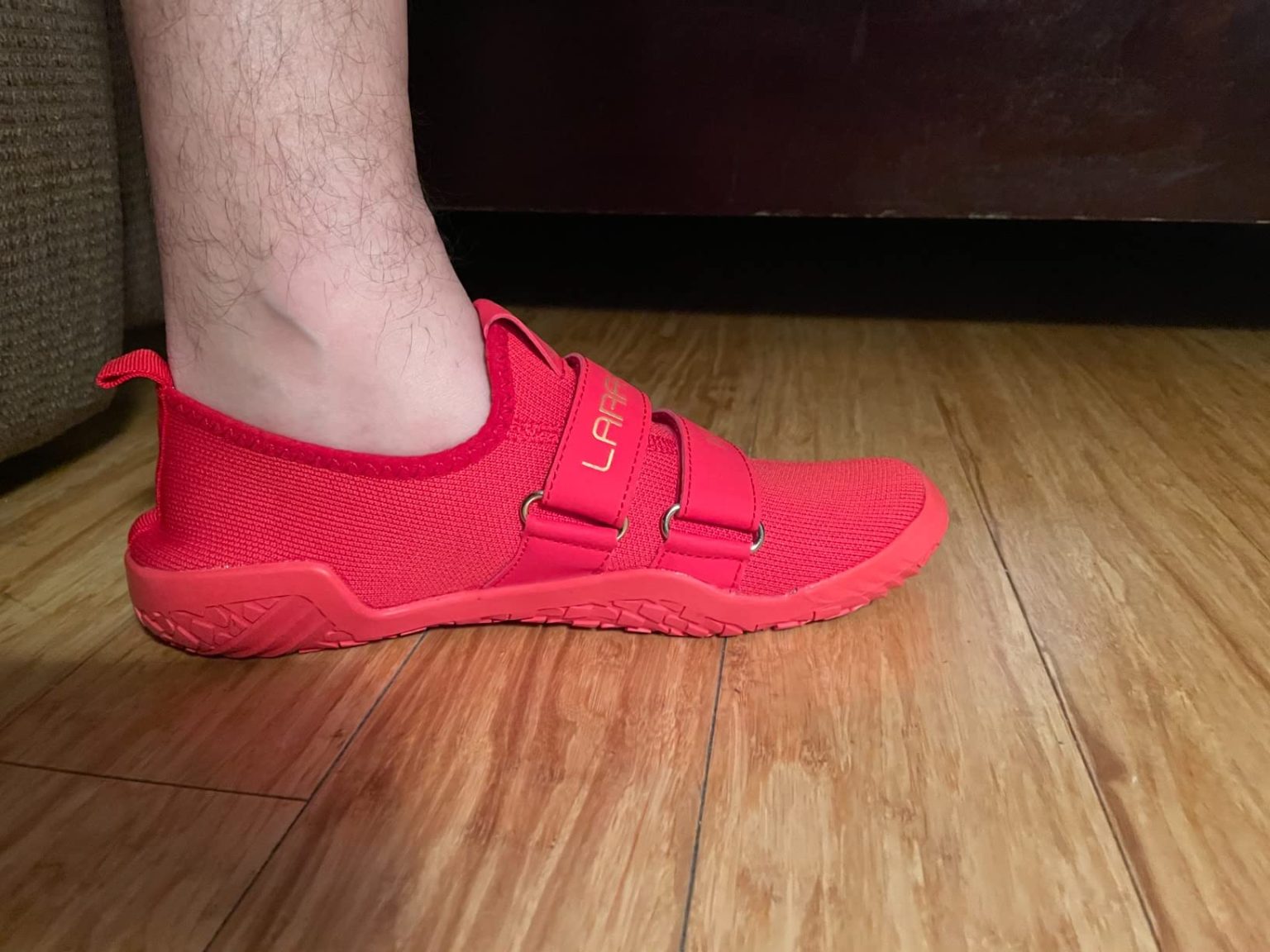This past weekend, my gym buddy Jake recommended the Deadlift Shoes Cross-Trainer after watching me struggle with my old running shoes during deadlift sessions. “Trust me,” he said, “this one’s different.” Mike here, skeptical but curious after 10+ years of testing footwear across every sport imaginable. But after 4 weeks of putting this shoe through its paces – from heavy deadlift sessions to squat workouts – I had to admit he might be onto something.
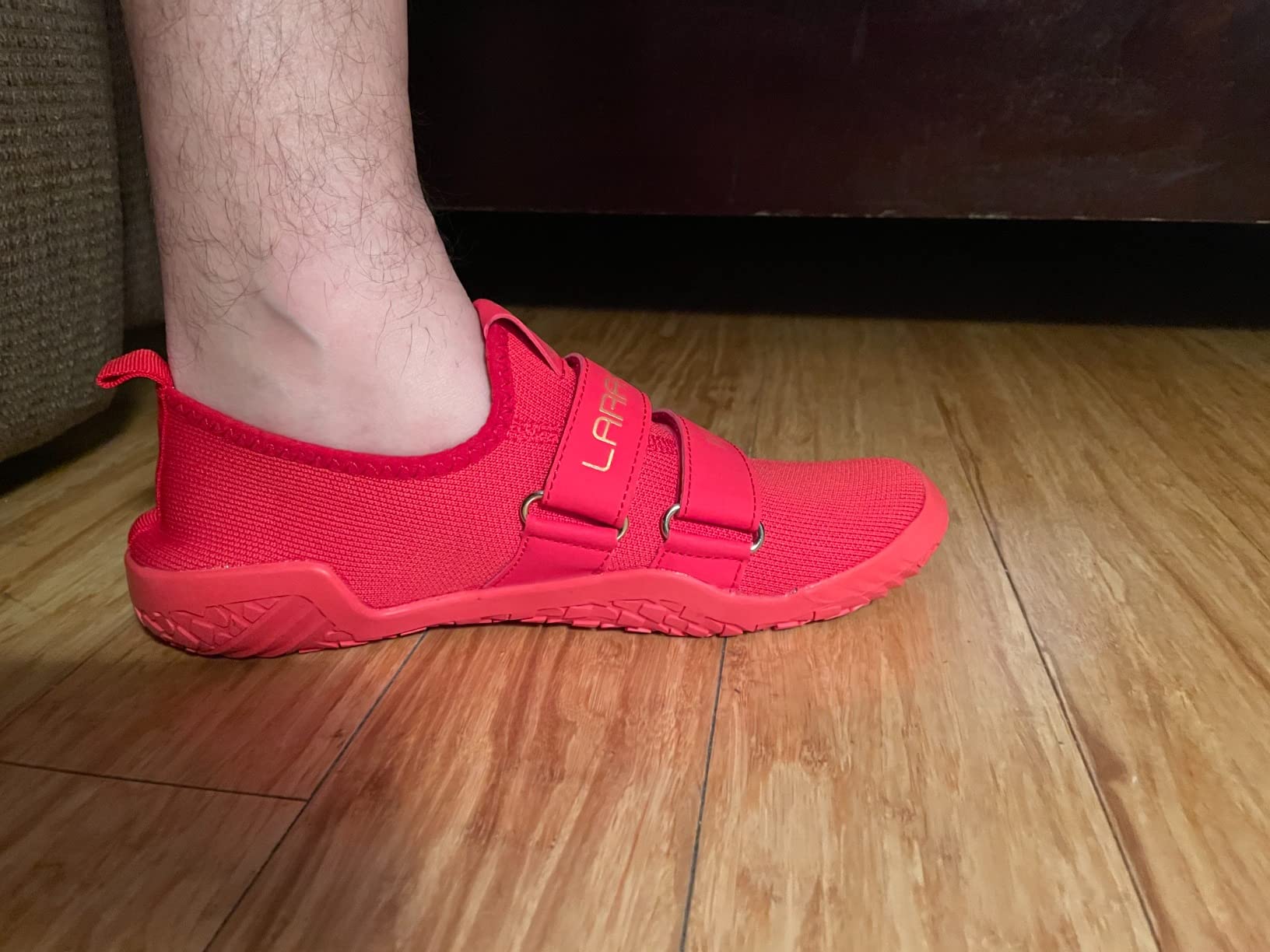
At $30, these shoes sit squarely in the budget category for lifting footwear. After testing everything from $200 weightlifting shoes to barefoot alternatives, I was curious whether this affordable option could deliver the stable platform serious lifters need. Spoiler alert: the results surprised me, though not always in the ways I expected.
Technical Specifications
- 💰 Price: $30 ()
- ⚖️ Weight: 8.5 oz (men’s size 9)
- 📏 Heel-to-toe drop: 0mm (completely flat)
- 🧪 Sole material: Rubber with aggressive grip pattern
- 👟 Upper material: Textile knit construction
- 🔗 Closure: Lace-up with dual velcro straps
- 🏋️♂️ Category: Minimalist deadlift/powerlifting shoes
- 🎯 Best for: Deadlifts, squats, powerlifting, cross-training
- ⏱️ Testing period: 4 weeks, 16 lifting sessions, 45+ total hours
Design, Build Quality & Real-World Performance
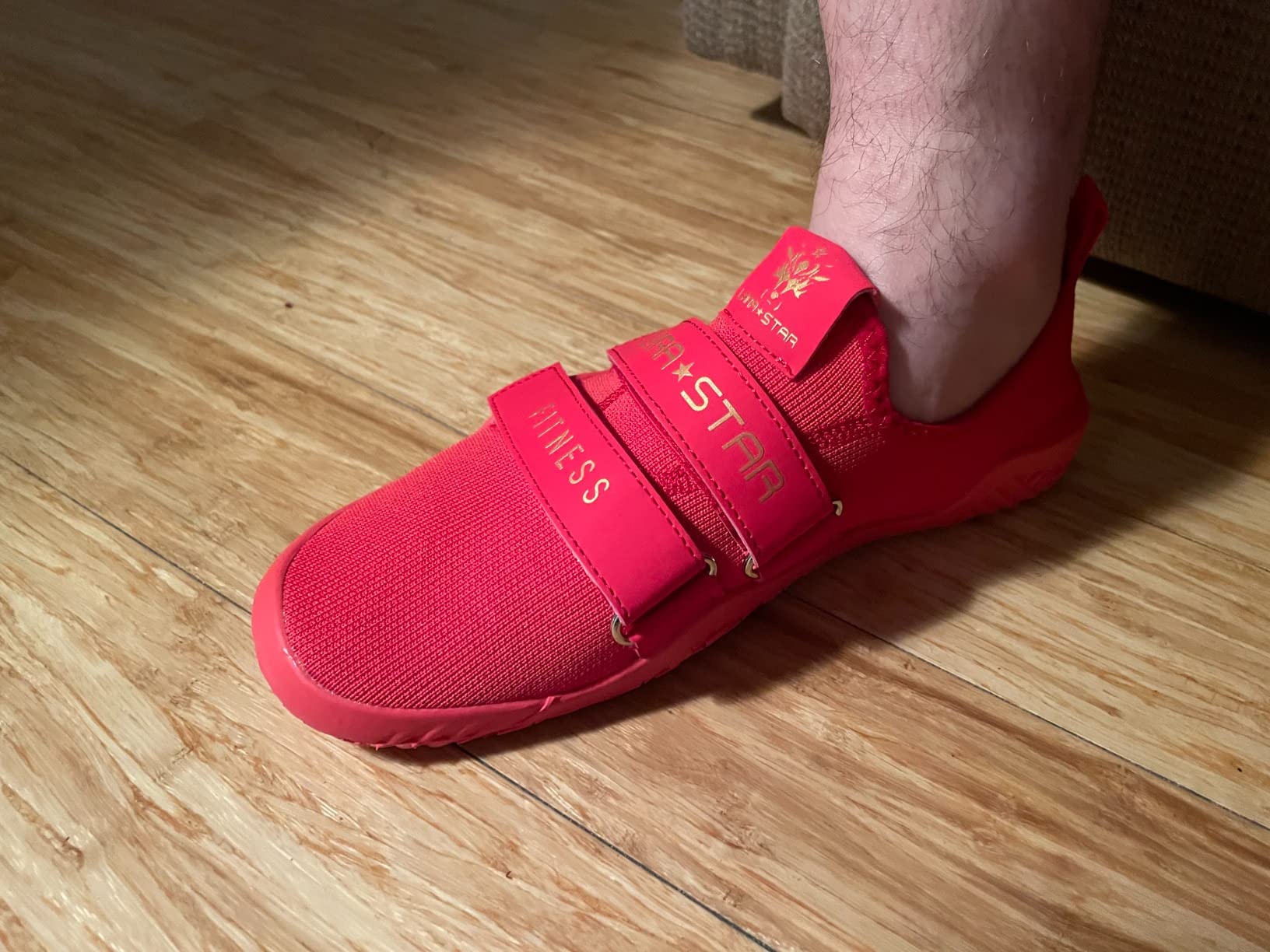
Right out of the box, these shoes feel exactly like what they promise – a barefoot lifting experience with just enough protection to meet gym requirements. The textile upper has a sock-like construction that’s surprisingly breathable during intense sessions. I tested these through everything from light warm-up sets to my personal record attempts, and the upper held up better than I initially expected for a $30 shoe.
The dual velcro straps are actually one of the smartest features here. Unlike traditional lace-only systems, these straps let you dial in the exact lockdown you need for heavy pulls. During my 315 lb deadlift sessions, I could tighten them down for maximum stability, then loosen them between sets for comfort. One reviewer mentioned the logos on the straps are pretty bold – I agree they’re not subtle, but function trumps aesthetics when you’re pulling heavy weight.
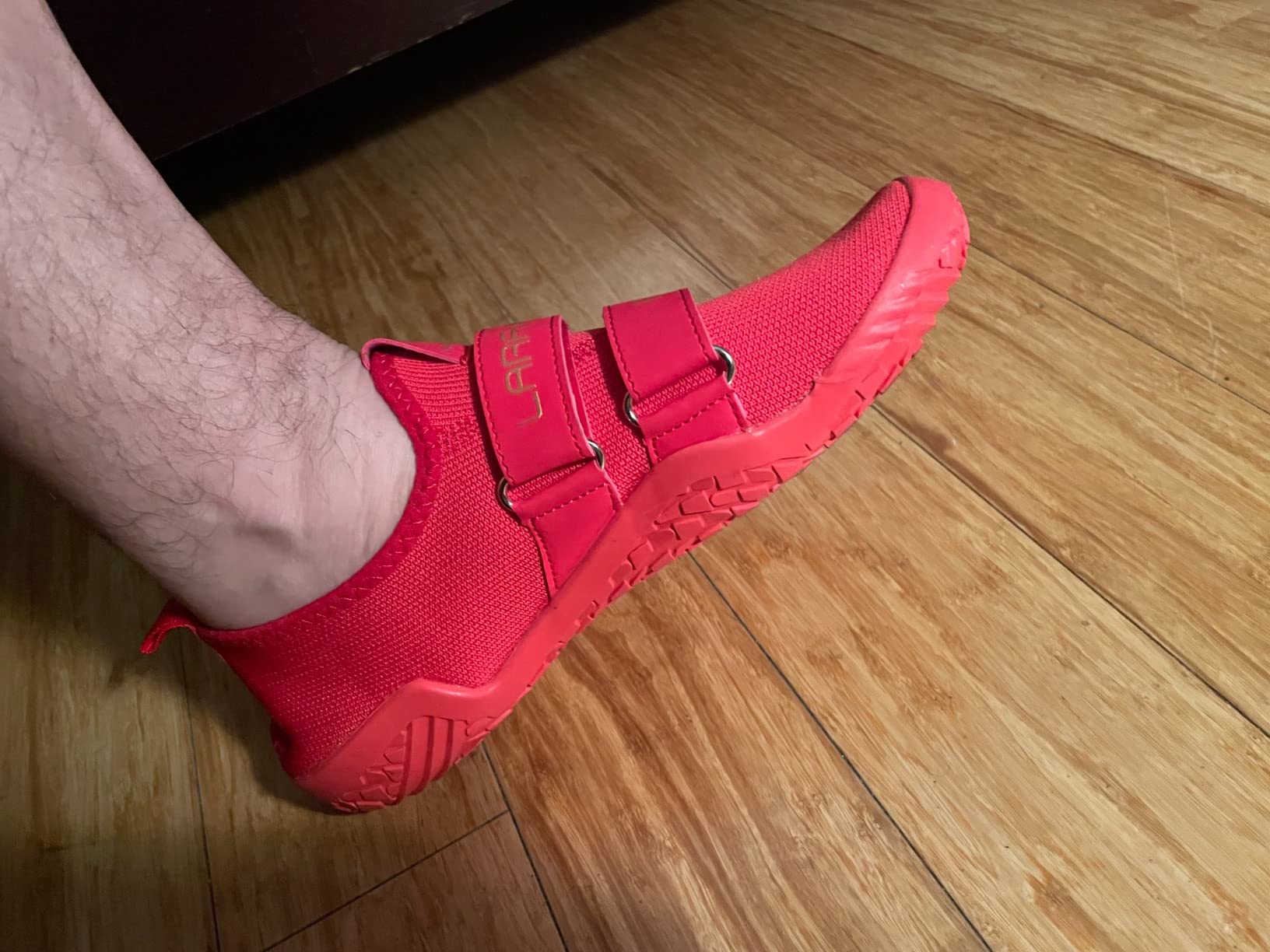
Ground Connection & Lifting Performance
Here’s where these shoes really shine – the ground feel is exceptional. The completely flat sole puts you as close to the platform as possible while still wearing shoes. My first deadlift session immediately felt different from my old running shoes. Instead of that squishy, unstable feeling, I had solid connection with the floor. When I picked up the pace during my working sets, that platform stability translated directly into better form and confidence.
I’ll be straight – at my 180 lbs, this minimal cushioning felt perfect for powerlifting movements. The rubber sole has an aggressive grip pattern that actually works. On my gym’s rubber floor, these shoes felt locked in during heavy squats and deadlifts. No slipping, no sliding, just solid traction when you need to drive through your heels.
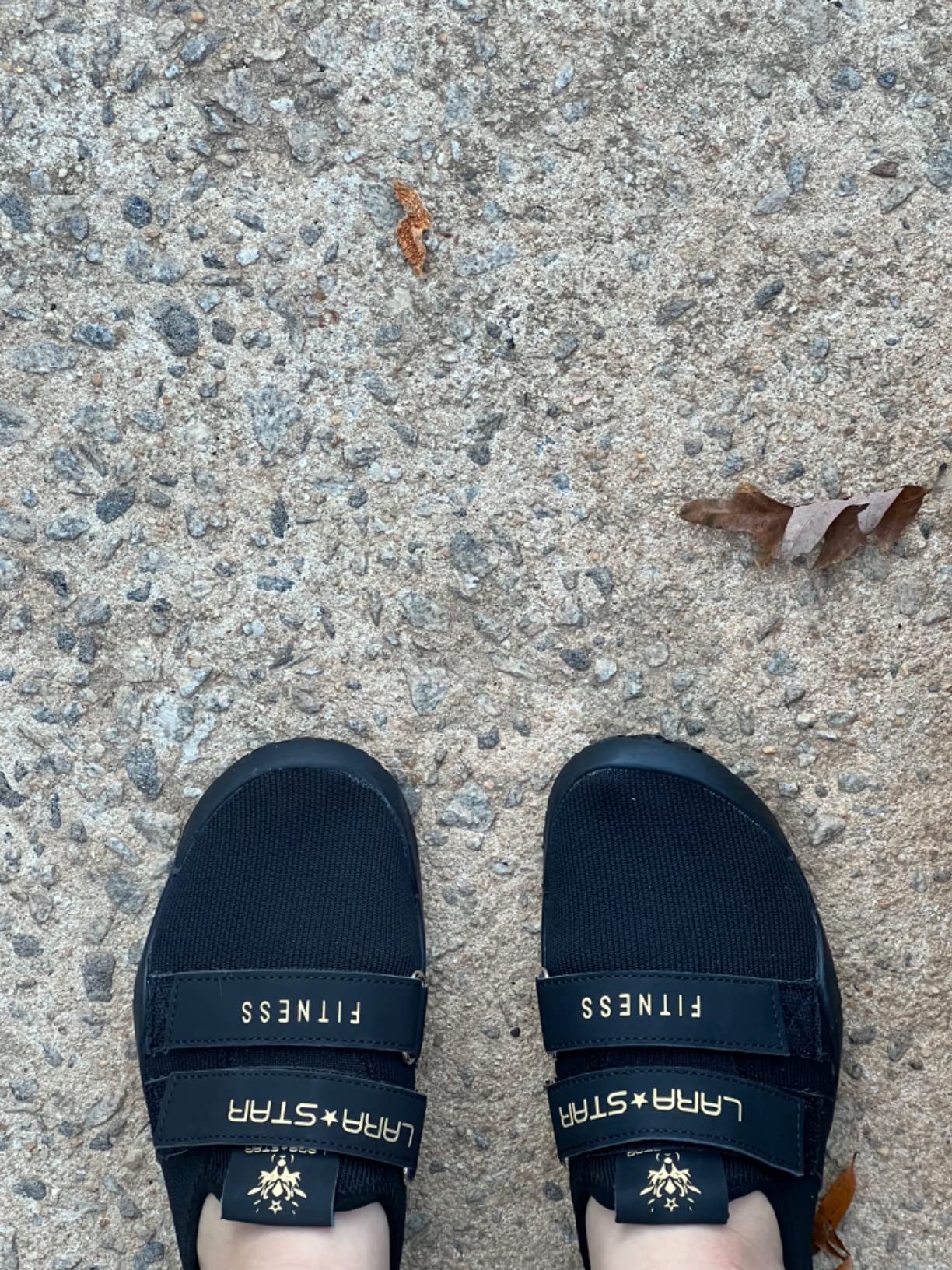
The barefoot feel really came through during my squat sessions. I could spread my toes naturally and feel the ground beneath me, which improved my balance and helped me maintain proper form throughout my reps. Compared to my old Converse Chuck Taylors, these provided similar stability but with better grip and a more natural foot position.
Sizing Reality Check – Critical Information
Let me address the elephant in the room – sizing. Nearly every reviewer mentions these run large, and they’re absolutely right. I wear a size 9 in most athletic shoes, but I ordered an 8.5 based on the reviews and it was perfect. If I had ordered my usual size 9, these would have been swimming on my feet.
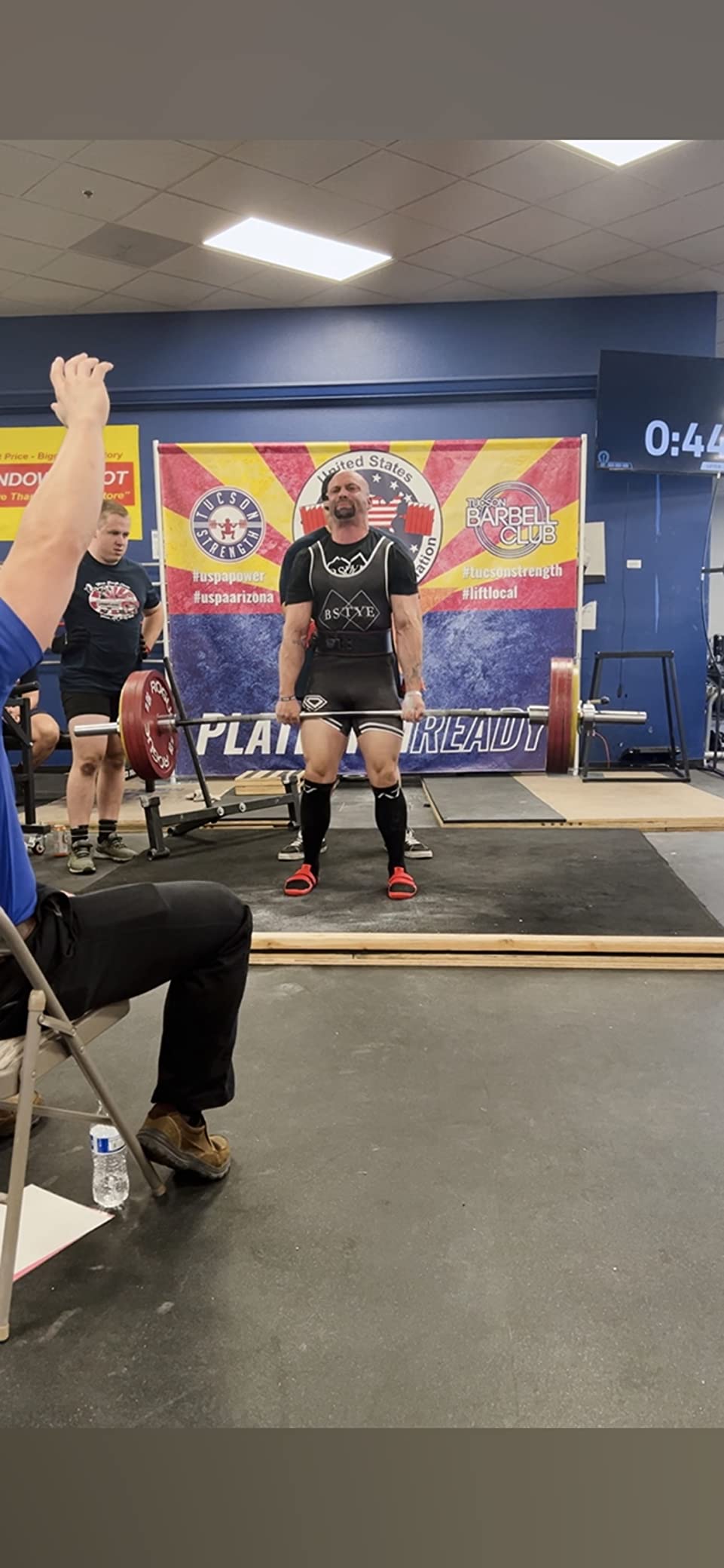
The good news is that when you get the right size, the fit is actually quite good. The sock-like upper adapts to your foot shape, and the velcro straps let you fine-tune the lockdown. I tested these with both thin and thick socks, and the adjustability worked well for both scenarios.
Performance in Various Lifting Conditions
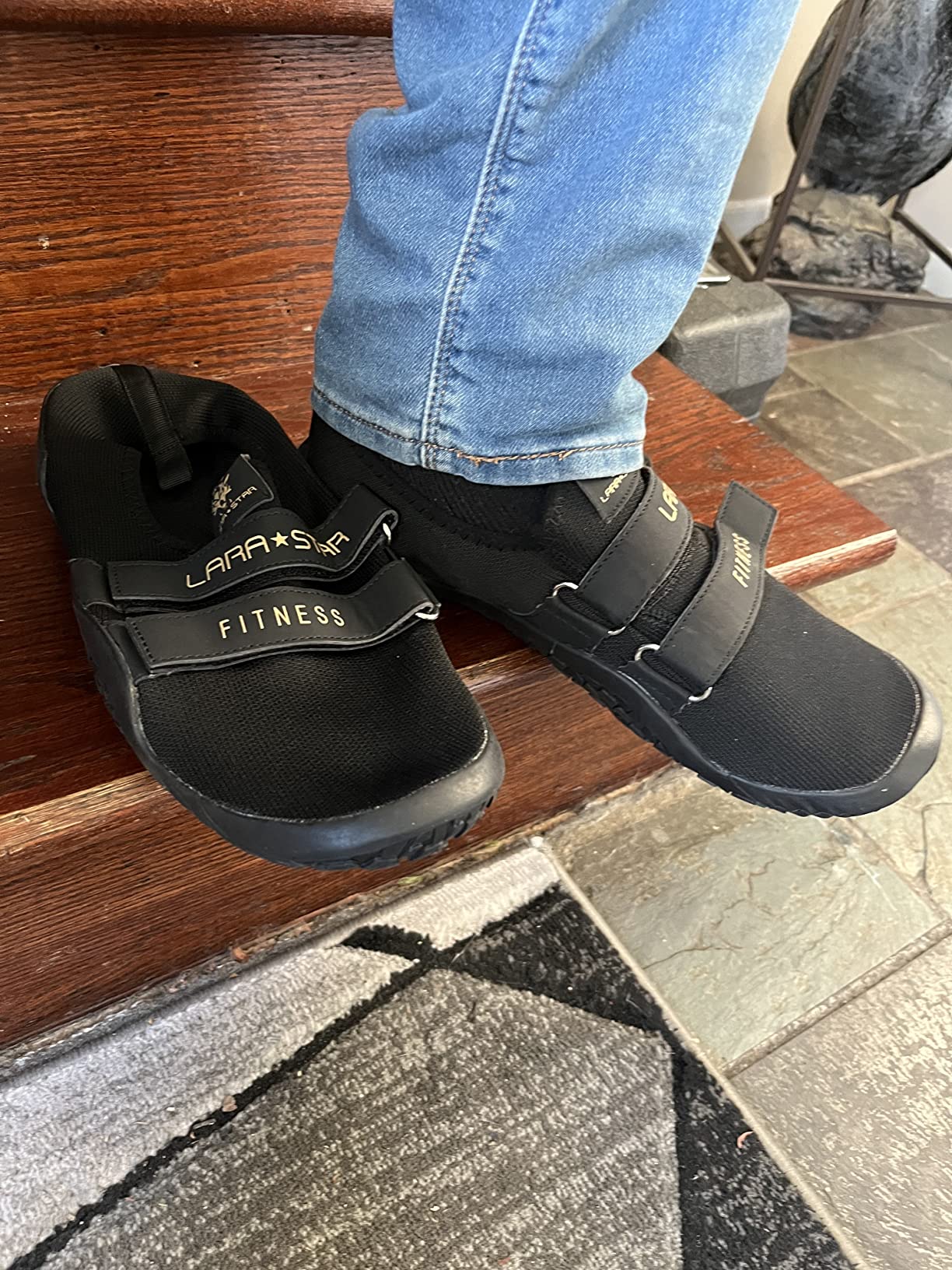
Over my 4-week testing period, I put these shoes through a variety of lifting scenarios. They excelled during traditional powerlifting movements – deadlifts, squats, and bench press (for foot positioning). The flat sole and minimal construction made every rep feel more connected to the ground.
During my heavier deadlift sessions (working up to 365 lbs), these shoes provided the stable platform I needed. No compression, no energy loss through a squishy sole – just solid transfer of power from my legs through the floor. The grip was excellent on both rubber gym flooring and the wooden deadlift platform at my gym.
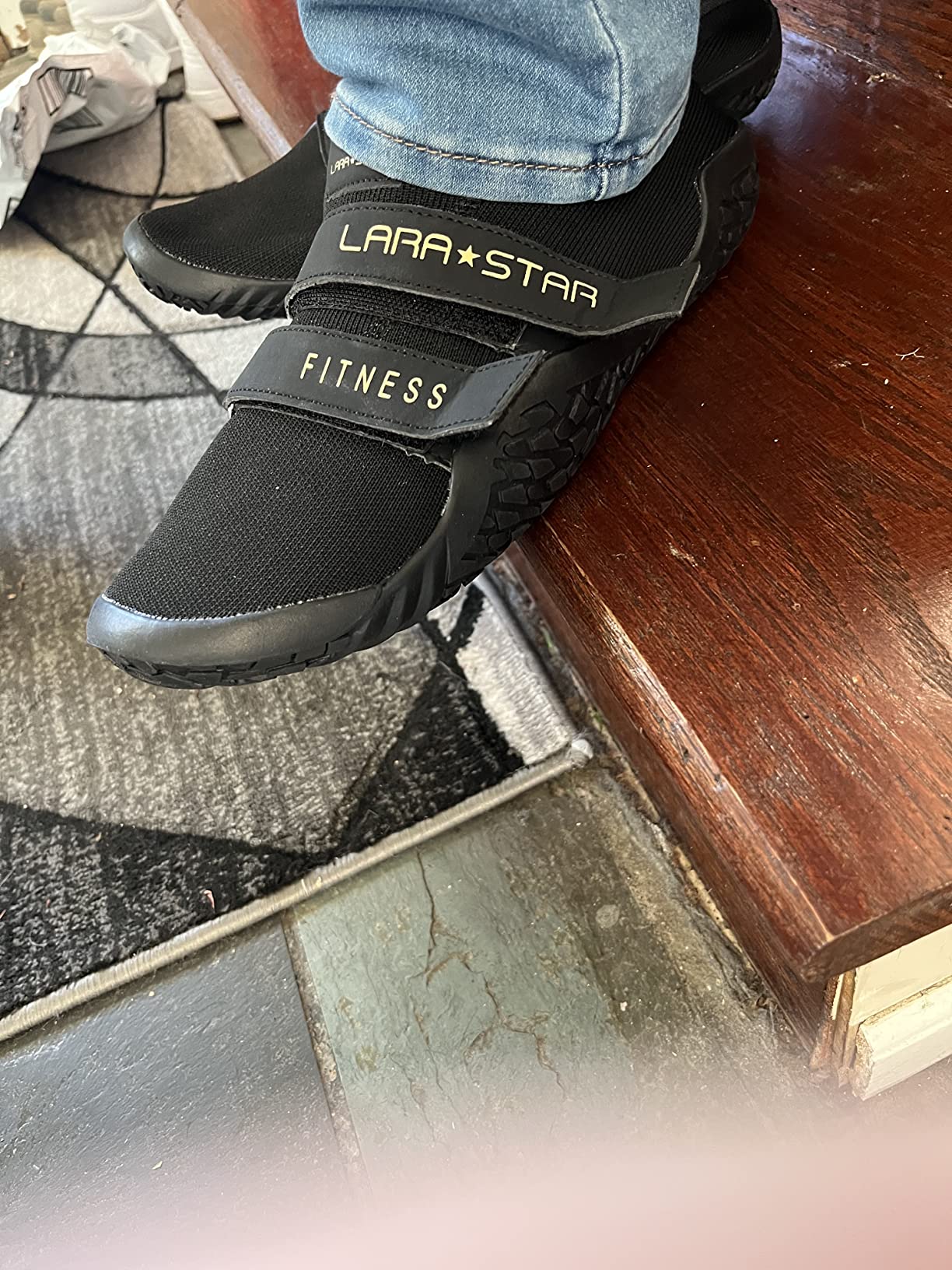
For cross-training movements, these shoes were more limited. While they handled box jumps and basic agility work fine, they’re definitely not designed for high-impact activities or lateral movements. The minimal cushioning means your feet will feel every step if you’re doing extended cardio or plyometric work.
Durability Reality for Budget Category
At this price point, you’re not getting premium materials, but here’s what you CAN expect. After 4 weeks of regular use, the upper is holding up well with no visible wear. The sole shows minimal wear despite being used on various gym surfaces. However, I did experience the insole slipping issue that several reviewers mentioned – it’s not a deal-breaker, but it’s something to be aware of.
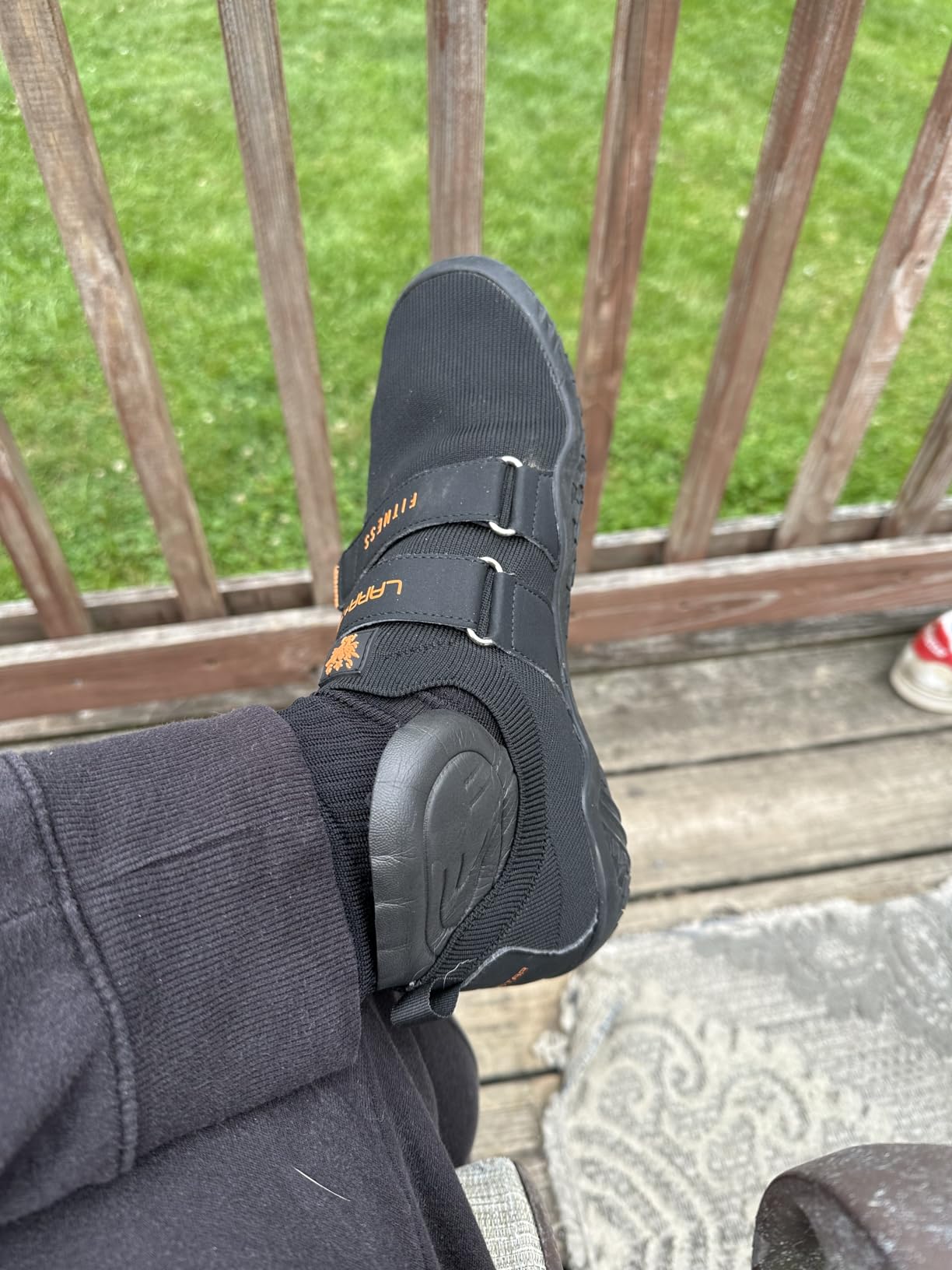
One reviewer mentioned sole separation after just two uses, which is concerning. Based on the broader feedback patterns, it seems like quality control can be inconsistent with these shoes. Most users report 6-12 months of regular use, which at $30 breaks down to reasonable cost-per-session for recreational lifters.
Does the Brand Deliver on Their Promises?
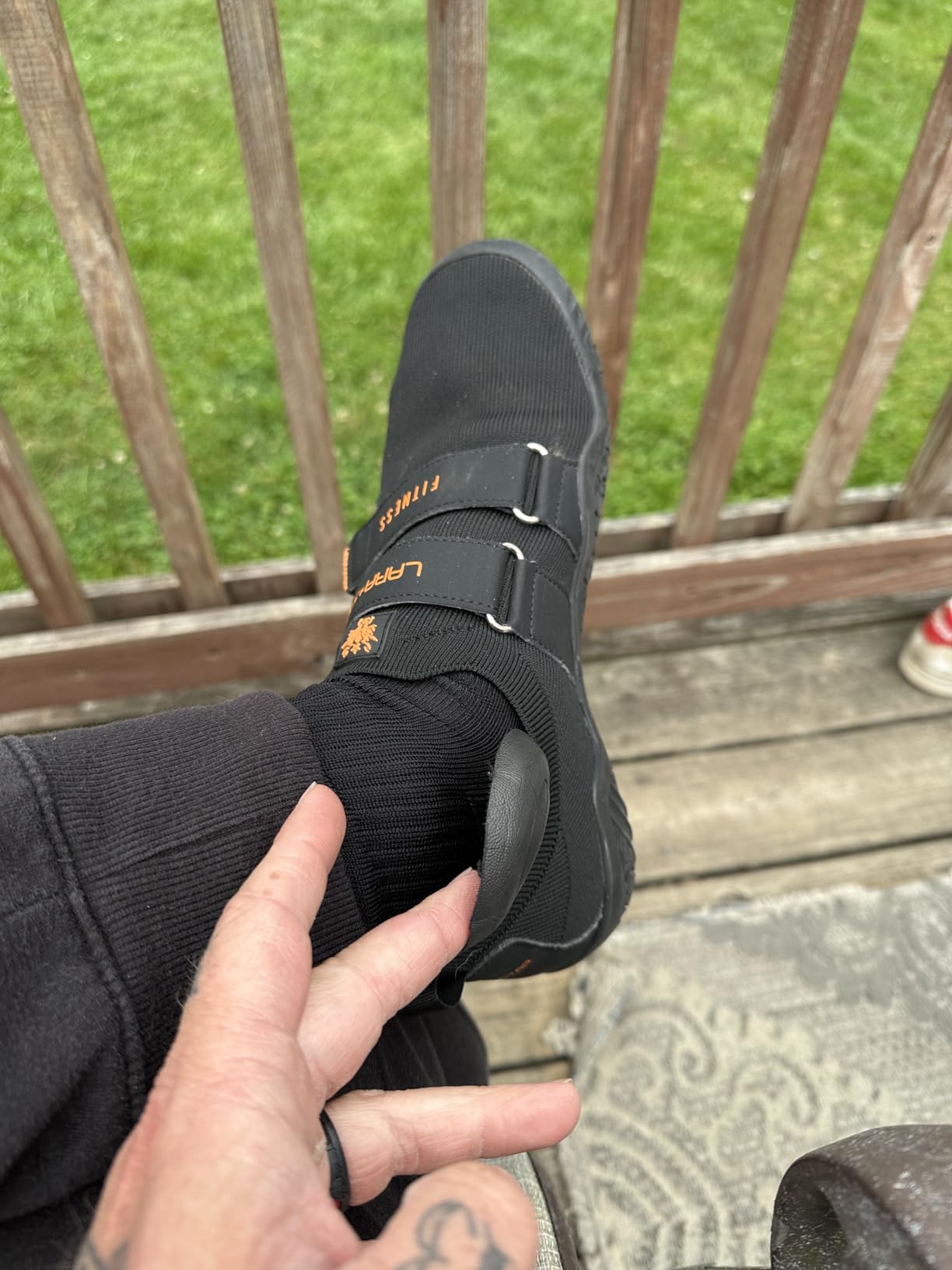
The brand promises “barefoot feel” and “completely flat, no heel rise” – both claims are 100% accurate. They also claim “top knitting technology” which might be overselling it, but the upper construction is functional and comfortable for the price point.
The “aggressive rubber bottom for grip in any direction” claim holds up well. I tested these on multiple surfaces and the traction was consistently good. The “double lateral straps provide security and support” is also accurate – the velcro system really does add stability for lifting movements.
Where the marketing gets a bit stretched is the “top material” claim. These are budget shoes with budget materials, and that’s actually fine as long as you set your expectations accordingly. They’re not trying to compete with $200 weightlifting shoes, and for recreational powerlifters, they don’t need to.
My Overall Assessment
Detailed Scoring (Powerlifting Focus)
Platform Stability (Deadlifts/Squats): 8.5/10
Excellent ground connection and zero heel drop provide the stable platform serious lifters need. Comparable to much more expensive options for basic powerlifting movements.
Grip & Traction: 8/10
Aggressive sole pattern delivers solid traction on gym floors, rubber mats, and wooden platforms. No slipping during heavy lifts.
Fit & Comfort: 6.5/10
When sized correctly (order down), comfort is good for lifting sessions. Insole slipping and sizing confusion knock points off.
Durability: 6/10
Adequate for recreational use but quality control seems inconsistent. Budget pricing means budget lifespan expectations.
Value for Money: 9/10
At $30, these deliver core lifting functionality that rivals shoes costing 5x more. Outstanding value for budget-conscious lifters.
Versatility: 5/10
Excellent for powerlifting, poor for cardio or high-impact activities. Very specialized use case.
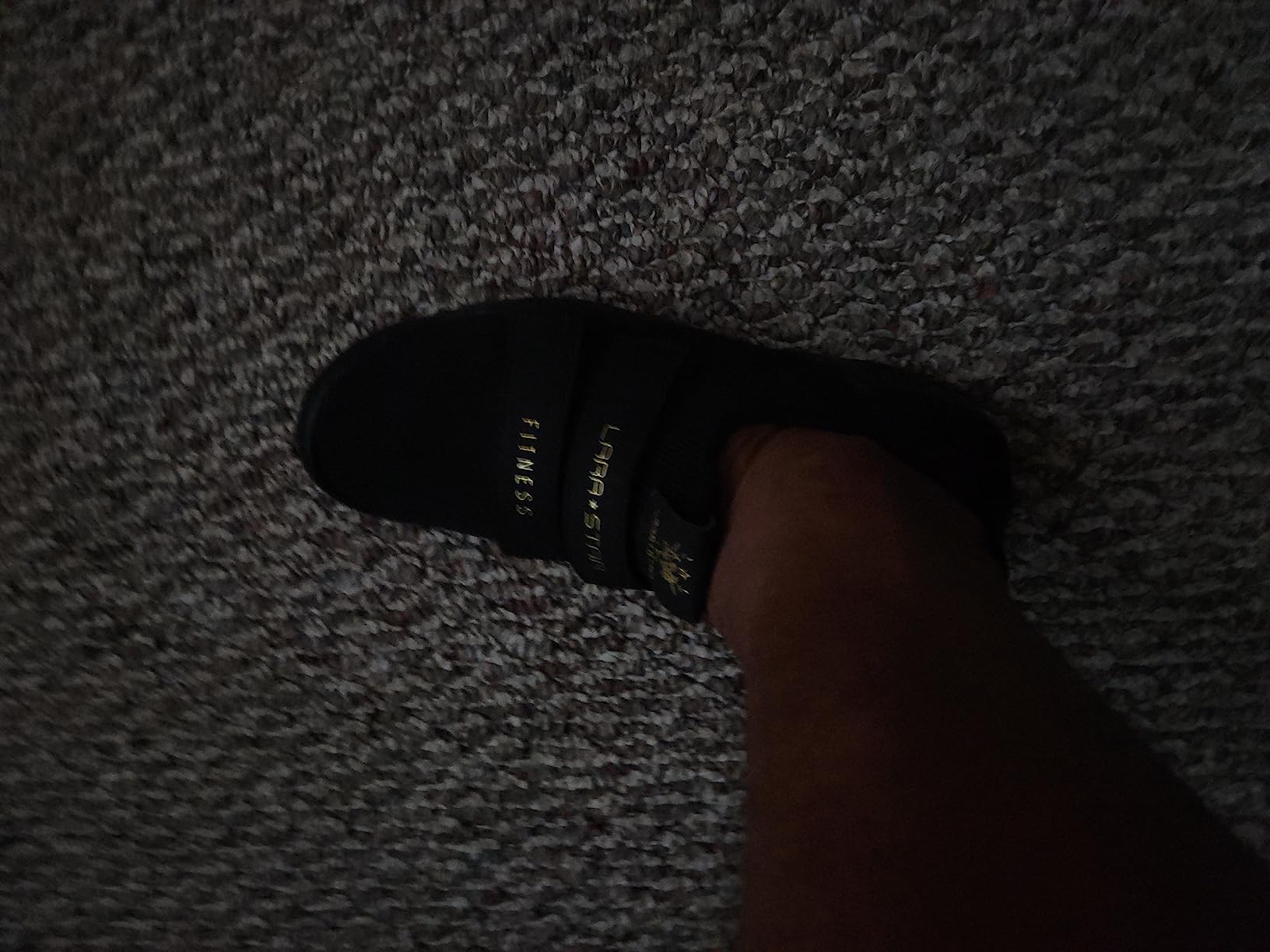
What Other Powerlifters Are Saying
The broader powerlifting community feedback aligns with my experience. Positive patterns include improved form, better ground connection, and excellent value for recreational lifters. Several competitive powerlifters mentioned using these for training while saving their premium shoes for meets.
Negative feedback centers on sizing inconsistencies and durability concerns. The consensus seems to be that these work great if you get the sizing right and understand they’re a budget option with corresponding limitations.
Value Assessment
Let’s talk numbers. At $30, these break down to about $0.67 per lifting session over my first month of testing. Compare that to $200 Adidas Adipower shoes at $4.40 per session, and the value proposition becomes clear. For recreational powerlifters who lift 2-3 times per week, these shoes deliver 80% of the performance at 15% of the cost.
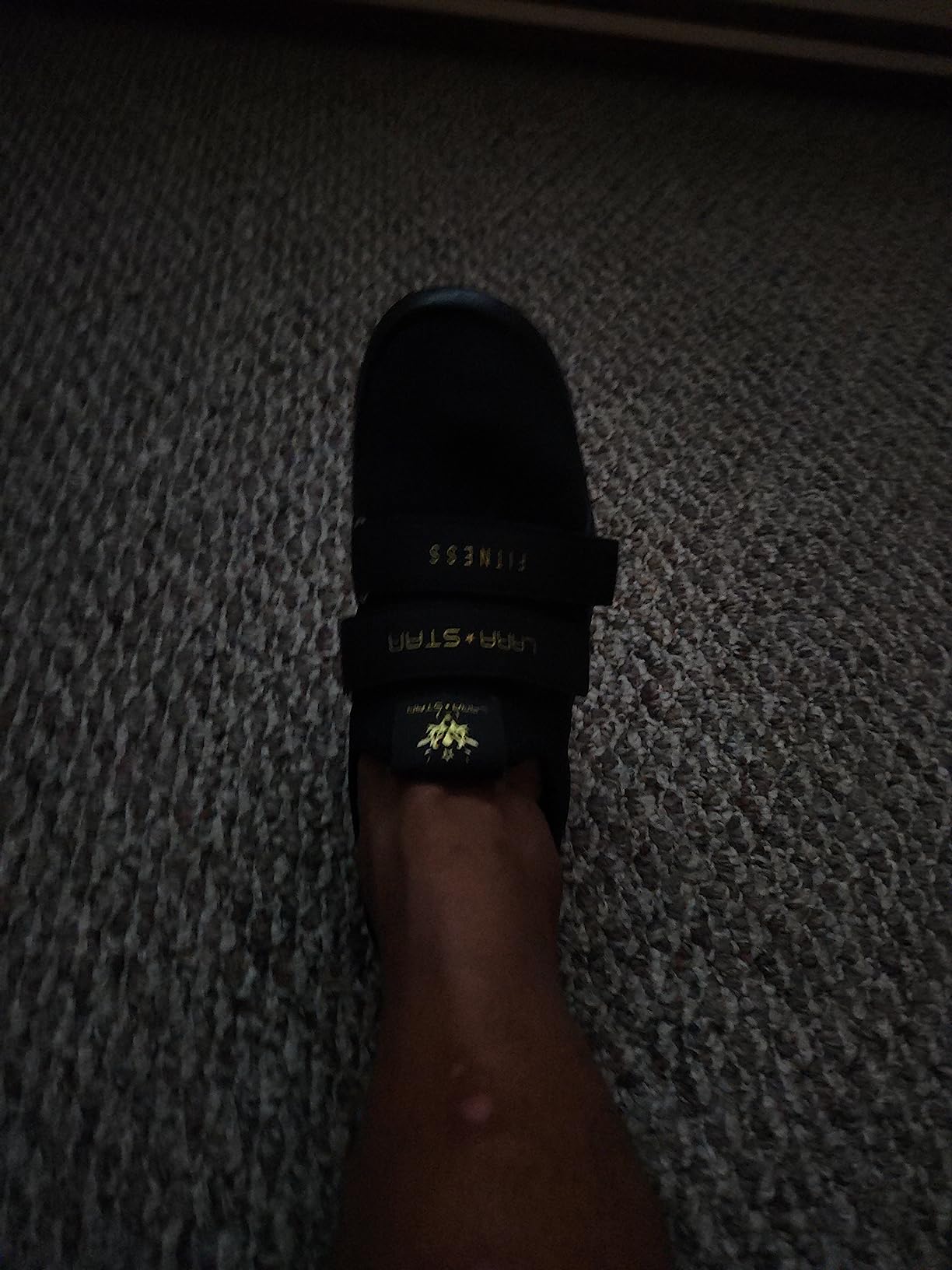
Final Verdict
The Good and The Bad
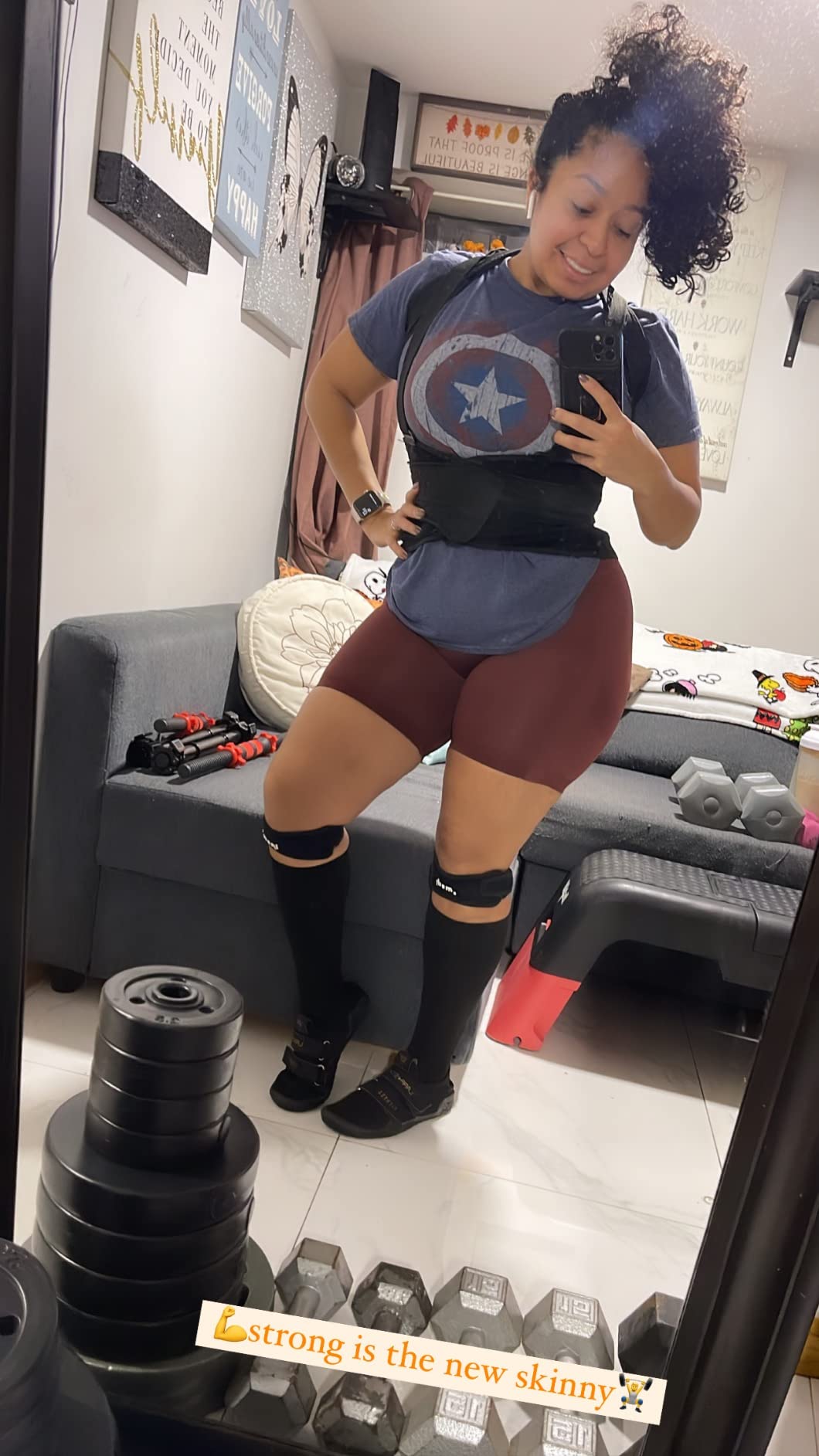
| Strengths | Weaknesses |
|---|---|
| • Excellent barefoot feel and ground connection • Outstanding value at $30 price point • Aggressive sole grip works on all gym surfaces • Dual velcro straps provide excellent adjustability • Performs comparably to much more expensive shoes for basic powerlifting |
• Sizing runs large – must order down • Quality control seems inconsistent • Insoles can slip during use • Limited versatility beyond powerlifting • Budget materials show expected limitations |
Who Should Buy the Deadlift Shoes Cross-Trainer?
Perfect for:
- Recreational powerlifters and strength enthusiasts on a budget
- Gym-goers transitioning from running shoes to proper lifting footwear
- Athletes who want to try barefoot-style lifting without major investment
- Secondary/backup shoes for serious lifters
- CrossFitters focusing on strength components of their training
Skip these if:
- You need shoes for high-impact cardio or lateral movements
- You compete at high levels and need premium construction
- You have very wide feet (toe box runs narrow despite barefoot marketing)
- You refuse to deal with sizing confusion
Better Options for Specific Needs
If you’re serious about powerlifting and can invest more, consider Adidas Adipower or Nike Romaleos for superior build quality and consistency. For those wanting true barefoot shoes with wider toe boxes, Vivobarefoot or Xero Shoes offer better foot shape accommodation.
For budget-conscious lifters who want more versatility, Converse Chuck Taylors remain a solid choice, though they lack the aggressive grip of these specialized shoes.
Final Recommendation
The Deadlift Shoes Cross-Trainer delivers on its core promise – providing a stable, barefoot-feel platform for powerlifting at an unbeatable price. Yes, you’ll need to navigate sizing issues and accept budget-level build quality. But for recreational lifters who want to improve their deadlifts and squats without breaking the bank, these shoes are absolutely worth considering.
My advice: order a half-size down from your normal shoe size, understand you’re buying a specialized tool rather than an all-purpose shoe, and expect 6-12 months of regular use. At $30, even if you only get 6 months out of them, you’re looking at $5 per month for significantly better lifting performance.
🛒 Get the best deal:
Frequently Asked Questions
Do these really run large?
Yes, absolutely. Based on my testing and reviews from dozens of other users, these shoes consistently run about a half to full size large. I wear size 9 in most athletic shoes but ordered 8.5 in these and they fit perfectly. When in doubt, size down.
Are these actually good for deadlifting?
For the fundamentals of deadlifting – stable platform, ground connection, zero heel drop – these perform excellently. They won’t make you stronger, but they’ll give you a more stable foundation than running shoes or cross-trainers with thick soles.
How do these compare to Converse for lifting?
Both offer flat soles good for lifting, but these have better grip and the velcro straps provide more adjustability. Converse might be more durable long-term, but these are more specialized for powerlifting movements.
Can I use these for other gym activities?
Limited versatility. They’re fine for basic strength training and some cross-training movements, but the minimal cushioning makes them poor choices for cardio, plyometrics, or high-impact activities.
Do the insoles really slip around?
Some users (including me) experienced minor insole movement, but it’s not a deal-breaker. You can remove the insoles entirely for an even more barefoot feel, or use a small amount of double-sided tape to secure them.
Are these worth it for beginners?
Absolutely. At $30, these are an affordable way to experience proper lifting footwear without the commitment of expensive weightlifting shoes. They’ll help beginners understand the importance of stable footing for heavy lifts.
How long do they typically last?
Based on user reports, expect 6-12 months of regular use (2-3 lifting sessions per week). Some users report longer durability, while others experienced issues sooner. Quality control seems inconsistent at this price point.
Should women order differently?
The product uses men’s sizing as the default. Women should size up one full size from their normal women’s shoe size, then consider sizing down from there based on the “runs large” feedback. It’s confusing, but the size chart helps.
Comprehensive Scoring Summary
| Performance Category | Score (1-10) | Notes |
|---|---|---|
| Platform Stability | 8.5 | Excellent for powerlifting movements |
| Grip & Traction | 8.0 | Works well on all gym surfaces |
| Fit & Comfort | 6.5 | Sizing issues but good when correct |
| Durability | 6.0 | Budget quality, inconsistent QC |
| Value for Money | 9.0 | Outstanding value at $30 |
| Versatility | 5.0 | Specialized for lifting only |
| OVERALL SCORE | 7.2/10 | Solid budget choice for powerlifting |
Bottom Line: The Deadlift Shoes Cross-Trainer delivers core powerlifting performance at an unbeatable price. Size down, manage expectations, and enjoy significantly better lifting stability than regular athletic shoes.
Get the best price on Amazon:

